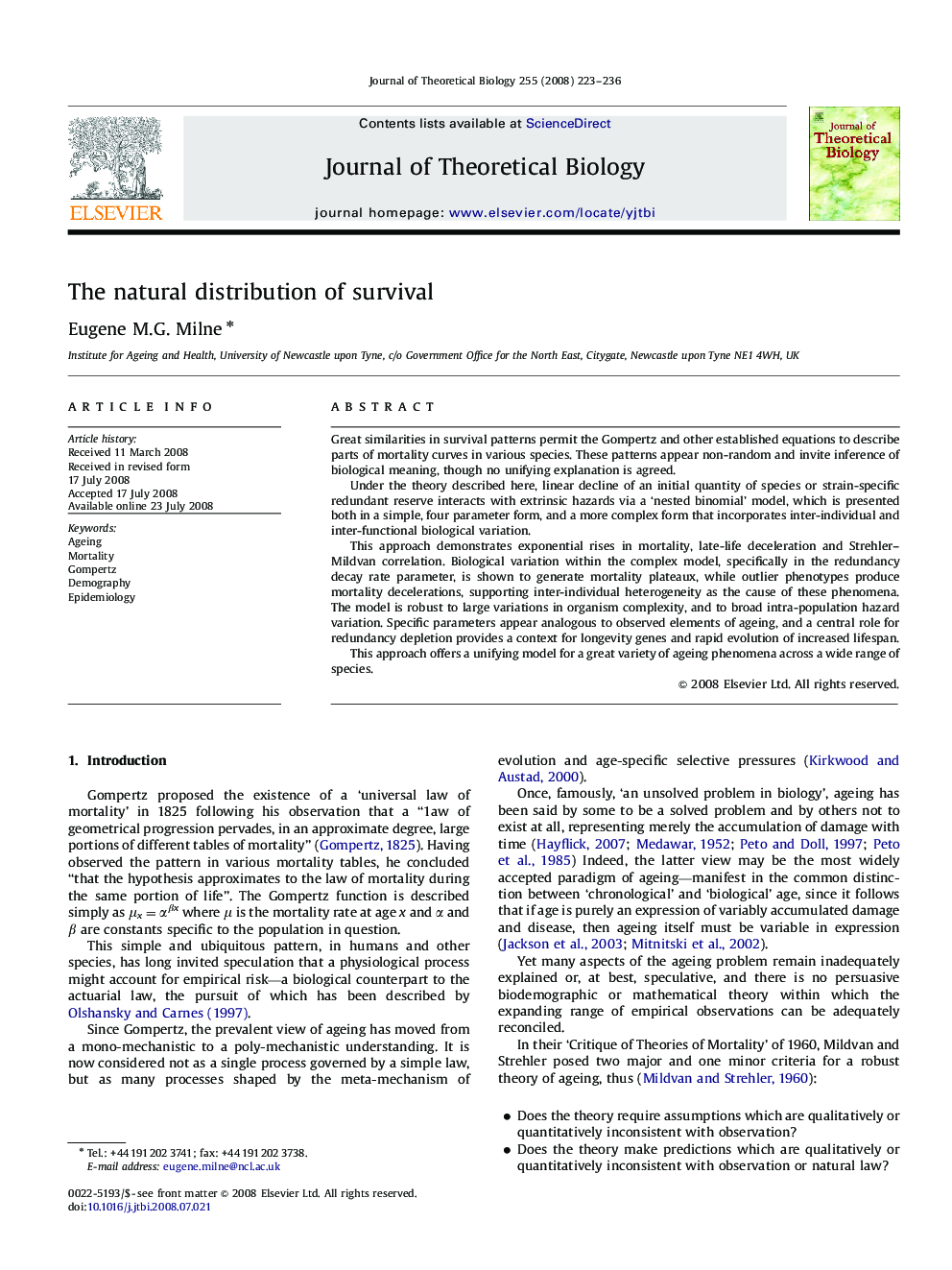| Article ID | Journal | Published Year | Pages | File Type |
|---|---|---|---|---|
| 4498238 | Journal of Theoretical Biology | 2008 | 14 Pages |
Great similarities in survival patterns permit the Gompertz and other established equations to describe parts of mortality curves in various species. These patterns appear non-random and invite inference of biological meaning, though no unifying explanation is agreed.Under the theory described here, linear decline of an initial quantity of species or strain-specific redundant reserve interacts with extrinsic hazards via a ‘nested binomial’ model, which is presented both in a simple, four parameter form, and a more complex form that incorporates inter-individual and inter-functional biological variation.This approach demonstrates exponential rises in mortality, late-life deceleration and Strehler–Mildvan correlation. Biological variation within the complex model, specifically in the redundancy decay rate parameter, is shown to generate mortality plateaux, while outlier phenotypes produce mortality decelerations, supporting inter-individual heterogeneity as the cause of these phenomena. The model is robust to large variations in organism complexity, and to broad intra-population hazard variation. Specific parameters appear analogous to observed elements of ageing, and a central role for redundancy depletion provides a context for longevity genes and rapid evolution of increased lifespan.This approach offers a unifying model for a great variety of ageing phenomena across a wide range of species.
